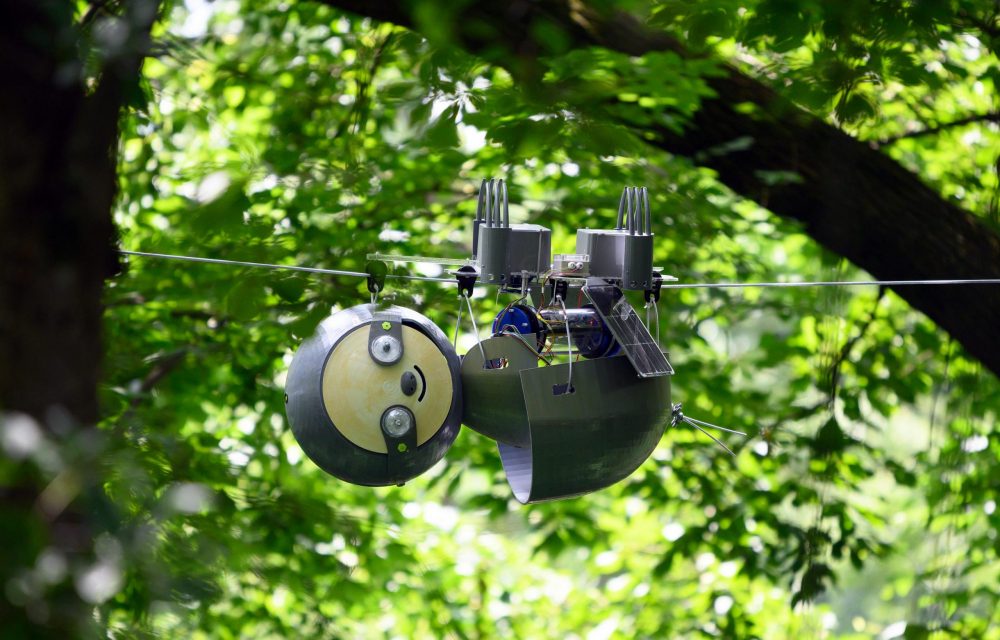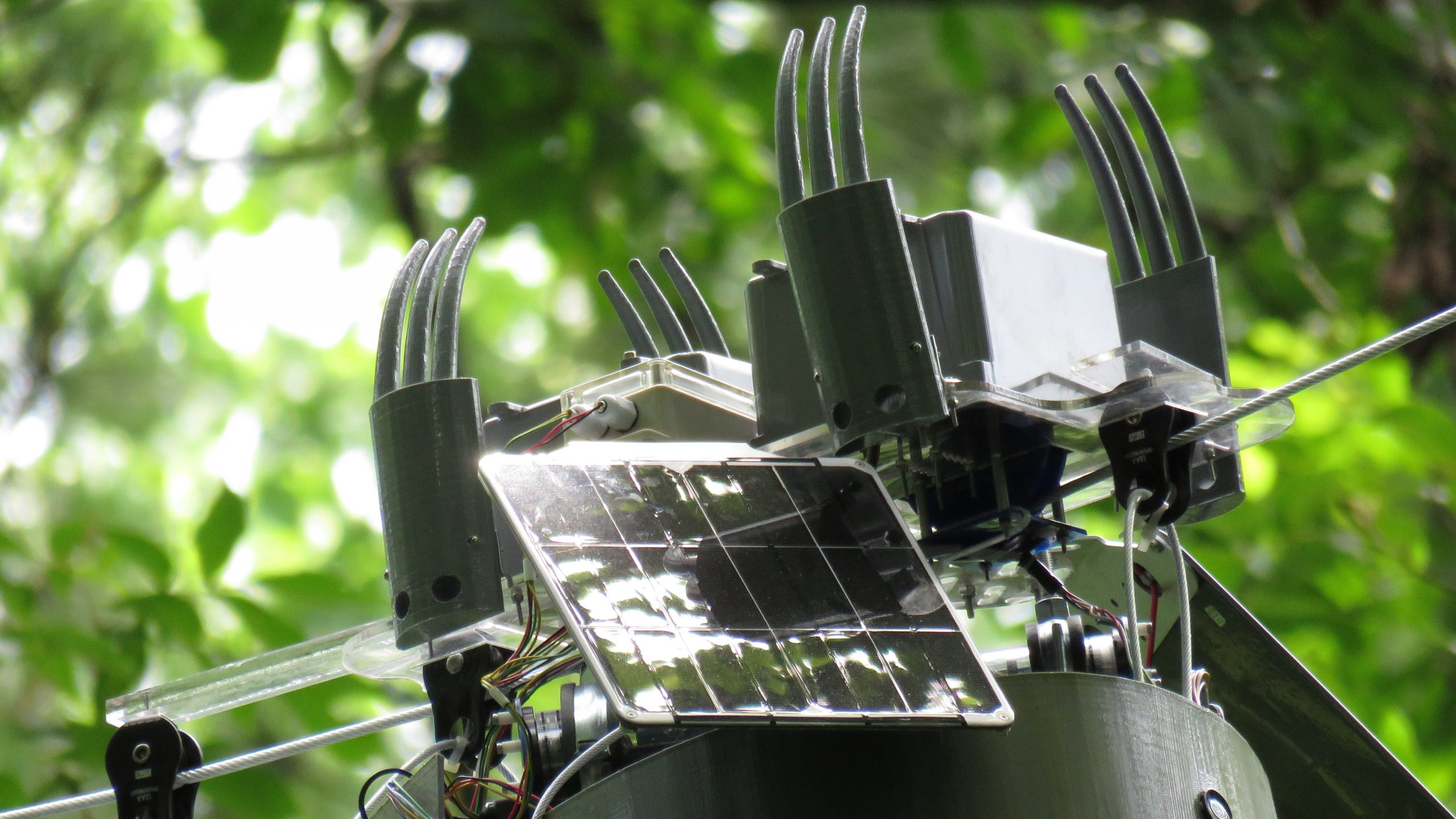SlothBot Helps Gather Information about Endangered Flora and Fauna
Hanging over a thick canopy of trees, you might find a sloth hanging around and inching slowly in the Atlanta Botanical Garden. Swinging over a 100-foot long steel cable, this creature is very lethargic. But the intention of it is more than just hanging around – SlothBot is designed to collect information about species in the garden.
This Sloth is a solar-powered robot. It might not seem like it, but this cute little thing is collecting crucial environmental data – temperatures, humidity, and carbon dioxide levels.

Image: Wevolver
The idea of the SlothBot came to Robotics professor at Georgia Tech, Magnus Egerstedt, while he was on vacation in Costa Rica and encountered the lethargic animal. This made him excited to embrace the slowness in robots.
The SlothBot needed to be energy efficient, just like a sloth, and able to conserve power while continuing to sample the air. Since SlothBots rarely move, it runs on a low battery and crawls towards the sunlight to recharge.
Ecologists at the Siempre Verde Research Center are trying to know more about a genus of rare orchids that bloom deep in the Ecuadorian rainforest. However, studying species in the depths of rainforests is an expensive, time-consuming and dangerous endeavor, SlothBot can help to understand the flowering mystery.A small robot could hand out undetected for long stretches of time, accumulating data that scientists might miss while collecting information manually. Besides, SlothBot was built to help ecologists to study endangered plant and animal species.

Image: 3D Printing Media Network
Currently, there is only one SlothBot, but Egerstedyt suggested that this idea has the potential to eye on the environmental changes, especially in remote areas. Step one towards taking action for climate change is to fundamentally understand what is going on.
Steady charge from solar energy is core to SlothBot’s success as it helps to power the hardware – camera, sensors that help collect basic ecological data. Over time, the SlothBot will adapt to the environment, learning where to capture light.
The bot could drastically transform species conservation by providing crucial information regarding endangered species such as rare orchids which otherwise would have been difficult to obtain.
Via: Popular Mechanics


